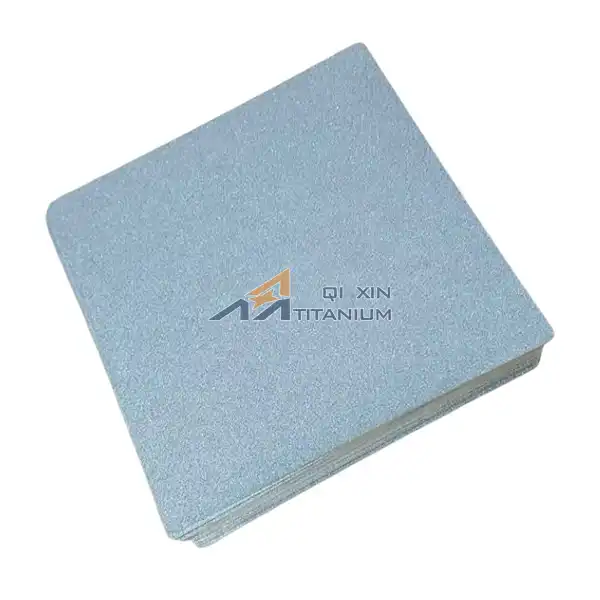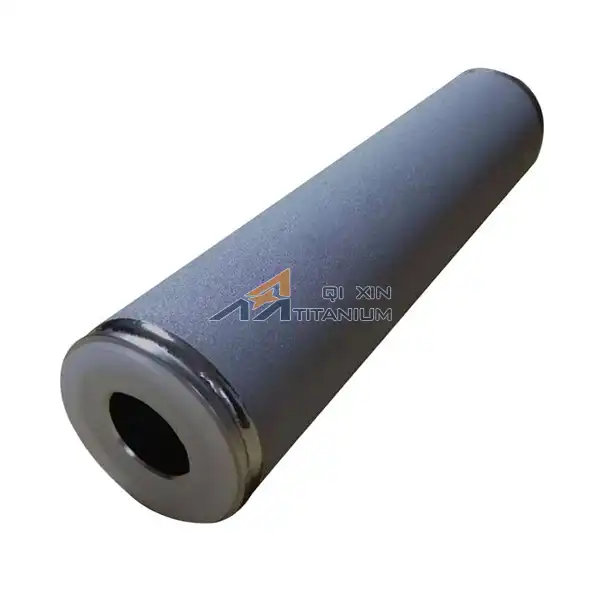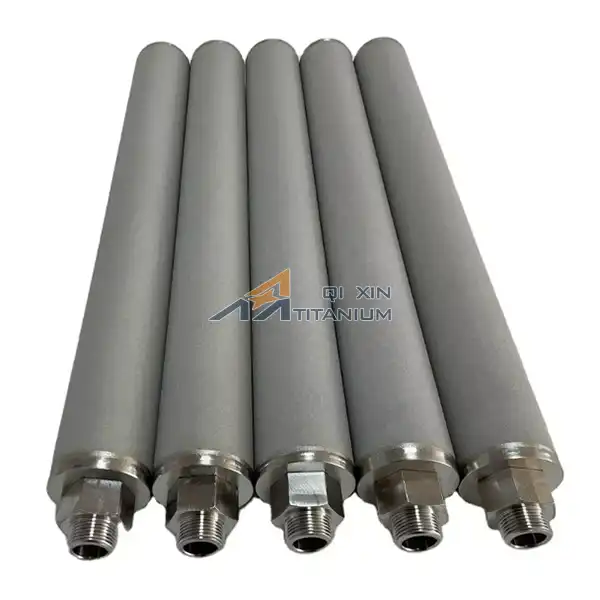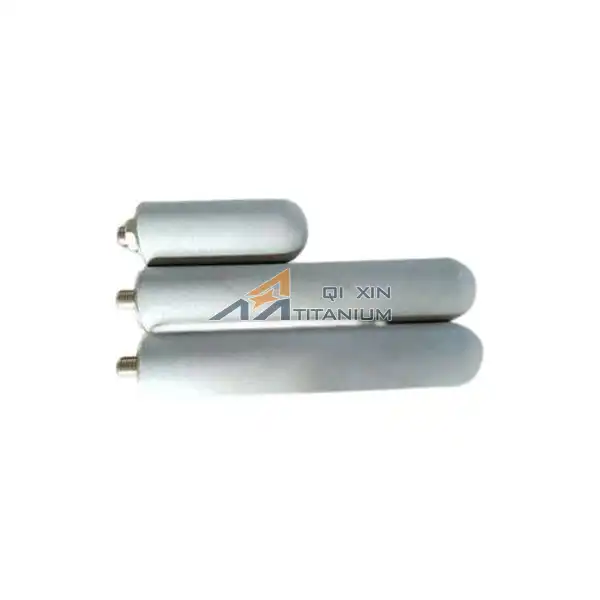What are sintered metal powder filters made of?
2025-03-31 10:52:34
Sintered metal powder filters are advanced filtration devices composed of finely powdered metal particles that have been compressed and heated to form a porous, rigid structure. These filters are typically made from materials such as stainless steel, bronze, nickel, titanium, or alloys of these metals. The manufacturing process involves carefully controlling the size and distribution of metal particles, which are then subjected to high temperatures and pressures to create a cohesive, yet permeable filter medium. This unique composition allows sintered metal powder filters to offer exceptional strength, durability, and filtration efficiency, making them ideal for a wide range of industrial applications, particularly in high-temperature or corrosive environments where traditional filter materials may fail.
Composition and Manufacturing Process of Sintered Metal Powder Filters
Raw Materials Used in Sintered Metal Powder Filters
The choice of raw materials for sintered metal powder filters is crucial to their performance and longevity. Stainless steel is a popular option due to its excellent corrosion resistance and mechanical strength. Other materials like bronze offer good thermal conductivity, while nickel and its alloys provide superior resistance to high temperatures and aggressive chemicals. Titanium, known for its exceptional strength-to-weight ratio and corrosion resistance, is often used in aerospace and chemical processing applications.
The selection of metal powders depends on the specific requirements of the filtration task. Factors such as particle size distribution, purity, and chemical composition are carefully considered to ensure optimal filter performance. Some manufacturers use a blend of different metal powders to create filters with unique properties tailored to specific applications.
Powder Metallurgy Techniques in Filter Production
The production of sintered metal filter powder relies heavily on powder metallurgy techniques. This process begins with the careful preparation of metal powders, which are precisely measured and mixed to achieve the desired composition. The powder mixture is then compacted into a mold or die under high pressure, forming what's known as a "green" compact.
Next, the compact undergoes sintering, a critical step where it's heated to temperatures just below the melting point of the metal. This causes the powder particles to bond together, forming a solid, porous structure. The sintering process is meticulously controlled to achieve the desired pore size and distribution, which directly affects the filter's performance characteristics.
Post-Sintering Treatments and Quality Control
After sintering, the filters may undergo additional treatments to enhance their properties. These can include:
- Surface finishing to improve smoothness and reduce particle shedding
- Heat treatments to modify the metallic structure and improve mechanical properties
- Chemical treatments to enhance corrosion resistance
- Impregnation with other materials to create composite filters with specialized properties
Quality control is an integral part of the manufacturing process. Each filter undergoes rigorous testing to ensure it meets the required specifications for porosity, permeability, and mechanical strength. Advanced techniques such as mercury porosimetry and bubble point testing are employed to characterize the pore structure and filtration efficiency of the finished products.
Unique Properties and Advantages of Sintered Metal Powder Filters
Superior Filtration Efficiency and Versatility
Sintered metal powder filters boast exceptional filtration efficiency across a wide range of particle sizes. The porous structure created during the sintering process allows for precise control over the filter's pore size distribution. This enables manufacturers to produce filters capable of removing particles as small as sub-micron size while maintaining high flow rates. The versatility of these filters is further enhanced by their ability to be customized for specific applications, offering tailored solutions for diverse industries.
Moreover, the three-dimensional nature of the filtration medium in sintered metal filters provides depth filtration capabilities. This means that particles are captured throughout the filter's thickness, not just on the surface, leading to higher dirt-holding capacity and longer service life compared to many traditional filter types.
Robustness and Durability in Extreme Conditions
One of the standout features of sintered metal powder filters is their exceptional durability, particularly in harsh operating conditions. These high temperature sintered powder metal filters can withstand high temperatures, often exceeding 1000°C, making them suitable for applications where organic or polymer-based filters would fail. Their resistance to thermal shock allows for rapid temperature changes without compromising structural integrity.
Additionally, the inherent strength of the sintered metal structure enables these filters to withstand high differential pressures. This makes them ideal for high-pressure applications in industries such as oil and gas, where filter collapse due to pressure is a significant concern. The robust nature of sintered metal filters also allows for repeated cleaning and regeneration, extending their operational lifespan and reducing replacement costs.
Chemical Compatibility and Corrosion Resistance
The choice of metal powders in the filter composition provides excellent chemical compatibility across a wide range of substances. Stainless steel and nickel-based filters, for instance, offer superior resistance to many corrosive chemicals, acids, and solvents. This makes sintered metal powder filters particularly valuable in chemical processing, pharmaceutical manufacturing, and food and beverage industries where aggressive cleaning agents are often used.
Furthermore, the solid metal construction eliminates concerns about media migration or particle shedding that can occur with some types of disposable filters. This is crucial in applications where product purity is paramount, such as in semiconductor manufacturing or biotechnology processes.
Applications and Future Trends in Sintered Metal Powder Filtration
Industrial and High-Tech Applications
Sintered metal powder filters find extensive use across various industries due to their unique properties. In the aerospace sector, these filters are crucial components in hydraulic and fuel systems, where reliability under extreme conditions is paramount. The automotive industry utilizes them in transmission systems and engine oil filtration, benefiting from their durability and fine filtration capabilities.
In the chemical and petrochemical industries, sintered metal filters play a vital role in catalyst recovery, gas purification, and polymer melt filtration. Their ability to withstand high temperatures and corrosive environments makes them indispensable in these applications. The pharmaceutical and biotechnology sectors rely on these filters for sterile filtration processes, appreciating their cleanability and resistance to sterilization methods.
Emerging Technologies and Material Innovations
The field of sintered metal powder filtration is continually evolving, with new technologies and materials pushing the boundaries of what's possible. Recent developments include the integration of nanofibers into the sintered metal matrix, creating hybrid filters with enhanced filtration efficiency and lower pressure drop. This innovation is particularly promising for gas filtration applications, where energy efficiency is a key concern.
Another exciting area of research is the development of functionally graded sintered metal powder filters. These filters feature a gradual change in porosity or composition across their thickness, allowing for optimized flow characteristics and filtration performance. This technology holds great potential for applications requiring both high efficiency and high throughput.
Sustainability and Environmental Considerations
As industries worldwide focus on sustainability, sintered metal powder filters are gaining attention for their eco-friendly attributes. Unlike disposable filters that contribute to waste, these durable filters can be cleaned and reused multiple times, significantly reducing environmental impact. Some manufacturers are exploring the use of recycled metal powders in filter production, further enhancing the sustainability profile of these products.
Additionally, the energy efficiency of sintered metal filters in certain applications can lead to reduced carbon footprints. For instance, in compressed air systems, the low pressure drop across these filters can result in substantial energy savings over time. As environmental regulations become more stringent, the role of sintered metal powder filters in promoting sustainable industrial practices is likely to grow.
Conclusion
Sintered metal powder filters represent a pinnacle of filtration technology, offering a unique combination of durability, efficiency, and versatility. Their composition of carefully selected metal powders, transformed through advanced manufacturing processes, results in filtration solutions capable of meeting the most demanding industrial challenges. As we've explored, these filters excel in extreme environments, provide superior filtration across various applications, and contribute to sustainability efforts. With ongoing innovations in materials and manufacturing techniques, the future of sintered metal powder filtration looks bright, promising even more advanced solutions for industries worldwide.
Contact Us
For more information about our high-quality sintered metal powder filters and how they can benefit your specific application, please don't hesitate to contact us at info@mmo-anode.com. Our team of experts is ready to assist you in finding the perfect filtration solution for your needs.
References
Johnson, R. A., & Smith, M. B. (2019). Advanced Materials in Sintered Metal Filtration. Journal of Powder Metallurgy, 45(3), 267-284.
Chen, X., & Lee, Y. (2020). Innovations in Porous Metal Filter Manufacturing. Industrial Filtration Quarterly, 18(2), 112-128.
Patel, S., & Nguyen, T. (2018). High-Temperature Applications of Sintered Metal Filters. Chemical Engineering Progress, 114(9), 55-63.
Williams, E. D., & Brown, K. L. (2021). Sustainability in Industrial Filtration: The Role of Reusable Metal Filters. Environmental Technology & Innovation, 22, 101432.
Zhao, H., & Thompson, R. (2017). Characterization Techniques for Sintered Metal Powder Filters. Powder Technology, 301, 1206-1215.
Garcia-Lopez, J., & Miller, A. (2022). Next-Generation Sintered Metal Filters: Integrating Nanotechnology. Advanced Materials & Processes, 180(4), 24-31.
Send Inquiry
Related Industry Knowledge
- Are sintered metal filter cartridges customizable?
- The Application of Titanium Anode Baskets in Electroplating Products
- Can titanium Anode Baskets Be Used in Seawater Or Other Corrosive Environments?
- Seawater Electrolysis Made Sustainable: Advantages of Reliable DSA Titanium Electrodes
- The Advantages of Sintered Metal Filter Plates for High-Pressure and High-Temperature Environments
- What is a Titanium Rack for Electroplating?
- Offshore Oil & Gas Applications: Why Choose ICCP Titanium Spiral Anodes for CP Systems?
- How do I select the right DSA coating titanium anode for my specific process?
- How long do MMO titanium anodes last?
- How to install MMO Coated Titanium Strip Electrodes?





